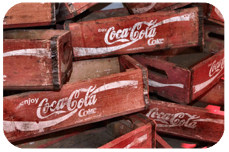 In the mid-20th century, many struggling nations around the world relied heavily on outside governments for assistance. Foreign aid of this nature accounted for 71 percent of all worldwide capital flows as recently as 1960. As the years progressed, however, governments largely removed themselves from the global development game. Today, foreign aid accounts for less than 1 percent of the U.S. budget and only 9 percent of current capital flows.
In the mid-20th century, many struggling nations around the world relied heavily on outside governments for assistance. Foreign aid of this nature accounted for 71 percent of all worldwide capital flows as recently as 1960. As the years progressed, however, governments largely removed themselves from the global development game. Today, foreign aid accounts for less than 1 percent of the U.S. budget and only 9 percent of current capital flows.
To fill this void, non-governmental organizations and groups such as the Bill and Melinda Gates Foundation have stepped up their efforts to improve the developing world. But charities like these aren’t the only ones looking to lend a hand. Increasingly, multinational corporations are coming up with their own large-scale foreign aid plans. For instance, three years ago Coca-Cola launched its 5by20 initiative, pledging to teach business skills to 5 million poor women by 2020. Since then, the soft drink giant has helped more than 500,000 women in 44 countries start their own small businesses. These include convenience store owners in the Philippines, mango farmers in Kenya, and impoverished Mexican villagers with bottle recycling operations.
It’s no coincidence that Coca-Cola has established presences in these seemingly far-flung places. The 5by20 program specifically assists those who have a stake in the company’s global value chain. This includes fruit growers, recyclers, and even women who repurpose Coca-Cola merchandise to make their own crafts. By training and financing these people, the company earns a ton of brand loyalty while also enjoying positive PR for their philanthropy. Most corporations require this sort of win-win scenario before getting involved in foreign aid, but companies must be careful not to seem like they’re solely concerned about their own gain. Approximately 10 percent of all global U.S. firms have serious charitable initiatives that help themselves as much as the poor. In Coca-Cola’s case, the company must ensure that the life-changing effects that the 5by20 program can have on participants outweigh the fringe benefits the brand receives.
Questions:
- Why did Coca Cola become actively involved in global development issues?
- How does Adam Smith’s “invisible hand” fit with multinational firms efforts?
Source: Nina Easton, “As Foreign Aid Dries Up, Companies Take the Lead in global Development,” Fortune, July 24, 2014. Photo by Gerard Stolk.
